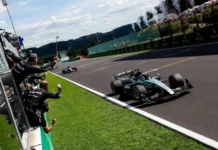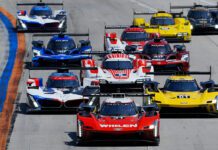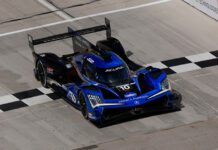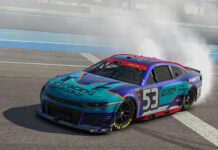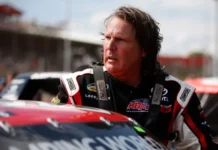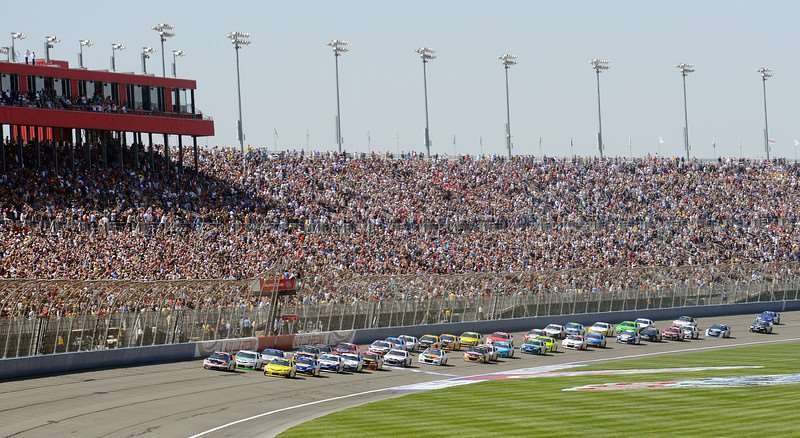Long before the green flag fell at 12:19 p.m., there were indications the crowd would be on par with other major sports events in the area. At the most accessible track on the NASCAR national circuit, there were traffic jams throughout the morning as fans, perhaps spurred by the amazing weather, made their way to Fontana.
There hadn’t been such problems since the early days of the track when sellouts were common.
Indeed, Sunday’s attendance – an estimated 85,000 – was the biggest in perhaps as many as 13 years. The finish, and subsequent pit road action/brawl, also ensures that many will return in 2013 to watch the Gen 6 stock cars duke it out again.
It was a dramatic return of the largest economic engine in the 909, with as much as $120 million worth of new dollars pumped into the local area.
How do you figure that, you might ask.
Hotels rooms were hard to come by this weened, and not at the inflated prices usually found in other NASCAR markets. Same for car and van rentals, trying to find a spot in a good restaurant from Thursday through Saturday night and the purchase of gas for those traveling one following the race.
Another sign was the camping area. It’s always been a popular spot, with a waiting list, The past few years the population in the infield city had dropped, but there was no room this weekend.
Sunday’s crowd was also very different than those early days, again thanks to the efforts by the ACS to create diversity in the stands. They have increased effort to attract Latinos and Asians in addition to the youth, NASCAR’s upcoming generation of fans.
Brad Keselowski noted earlier in the week he had actually noticed signs in the infield “not in English” as he went into turn 3 . NASCAR drivers understand the importance of such diversity in a market so much different than those found elsewhere, notably the Southeast, where the sport was born.
It was evident by the musical lineup. It ranged from Spanish singers (Lupillo Rivera, Mariachi Los Reyes) to aging rockers (Ratt). Also, the Viva la Fiesta area of the FanZone featured Lucha Libre, with the Blue Demon Jr. topping the card.
There was a full house Saturday night for Hot Import Nights, which catered to the important, at least demographic, younger crowd.
The track also has embraced social media. In fact, 30 fans gained free admission to the race with the promise of tweeting all race from a suite above pit row.
Equally important was Lefty’s Reading Challenge, which reached more than 100,000 elementary school children in San Bernardino, Riverside and Los Angeles counties. The youngsters, who read more than 700,000 books in four weeks, were given vouchers for Saturday’s Nationwide race and a ticket for a parent. That core could very well represent NASCAR’s future.
ACS lost its second Cup date in 2010, in part because attendance had fallen off. But at the time, NASCAR and its hard-core fans didn’t recognize the effects of the recession. As the rough times spread across the country, the crowds at Fontana weren’t nearly as bad as other tracks went through.
Zucker enticed IndyCar to return last fall, and that crowd was greater than what the sanctioning body expected. As a result, ACS has a new contract to host the next two IndyCar season-finales and Zucker dropped a hint there will be an announcement soon about that October weekend.
Before the race, Zucker predicted the crowd would be “at least 10,000” more than the 60,000 that showed up in 2012. Of course she had the inside information on the tickets, but even her fans surprised her.
She said the best-selling ticket package was one that included two race tickets, pit passes and scanners to hear driver-pit crew conversations. She forgot to include great weather and solid promotions.
Now comes the hardest part, maintaining the interest and high sales. The shadows on the Sprint Cup stock cars indicate it going to have at least a six-week impact. (Daily News)







